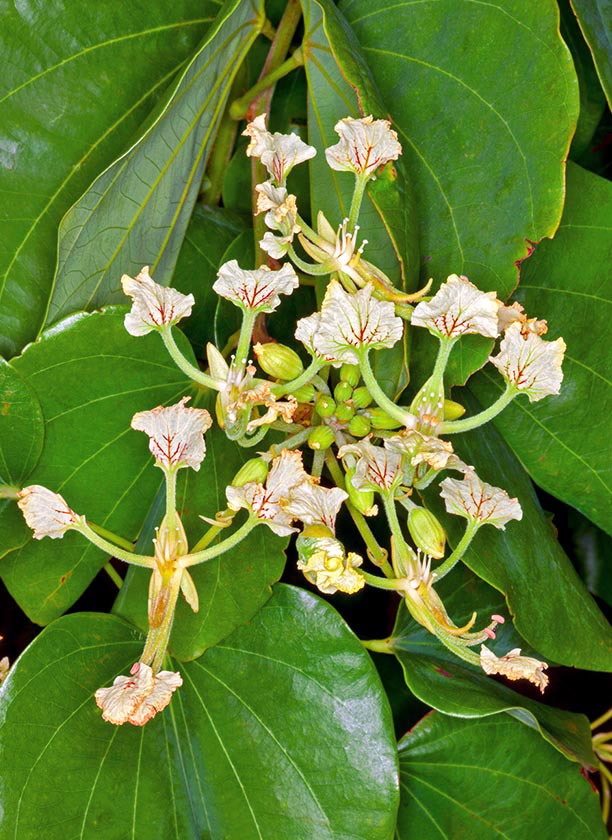Family : Fabaceae

Text © Pietro Puccio

English translation by Mario Beltramini

Bauhinia bassacensis is a tropical climber exceeding the 10 m © Giuseppe Mazza
The genus is honoured to the brothers Jean (1541-1613) and Gaspard (1560-1624) Bauhin, Swiss botanists, for the bilobed leaves; the name of the species refers to the river Bassac (Song Hau or Hau Giang in Vietnamese) of the Mekong River delta.
The Bauhinia bassacensis Pierre ex Gagnep. (1912) is a creeping, semi-woody and evergreen species, long up to more than 10 m, which anchors to the supports by means of cirri. The leaves, on a 3-7 cm long petiole, are alternate, bilobed, 7-12 cm long and 8-10 cm broad. Axillary corymbiform or terminal inflorescences, 7-13 cm long and 6-15 cm broad, carrying flowers with 5 unguiculate petals (petals with long narrow base similar to a stem), up to about 3 cm long, with elliptic margin, 1 cm long and about 0,8 cm broad, with wavy edge, of pale yellow colour, at times with violaceous spots. The fruits are flat woody, dehiscent (which spontaneously open when ripe), legumes, about 10 cm long, containing 3-5 seeds of 1 cm of diameter. It reproduces by seed which is convenient to scarify and keep in water for 24 hours, in order to speed up the germination, before planting them in sandy soil kept humid at the temperature of 22-24 °C.
Fast growing, little known species outside the origin zones, it can be cultivated exclusively in the zones with tropical and subtropical climate, in full sun or slight shade, with lowest temperatures preferably over the 14 °C, even if it can stand, when adult and for a very short period, temperatures of some degrees less. It is not particular for what the soil is concerned, even poor, provided well draining, but with preference for those from slightly acidic to neutral. It bears the prunings and can be made climb on other vegetation, barriers, fences and pergolas.
Parts of the plant are utilized in the traditional medicine.
Synonyms: Bauhinia sanitwongsei W. G. Craib (1924); Bauhinia detergens W. G. Craib (1927); Phanera bassacensis (Gagnep.) de Wit (1956); Phanera sulphurea (C.E.C. Fisch.) Thoth. (1967).
→ To appreciate the biodiversity within the family of FABACEAE please click here.
